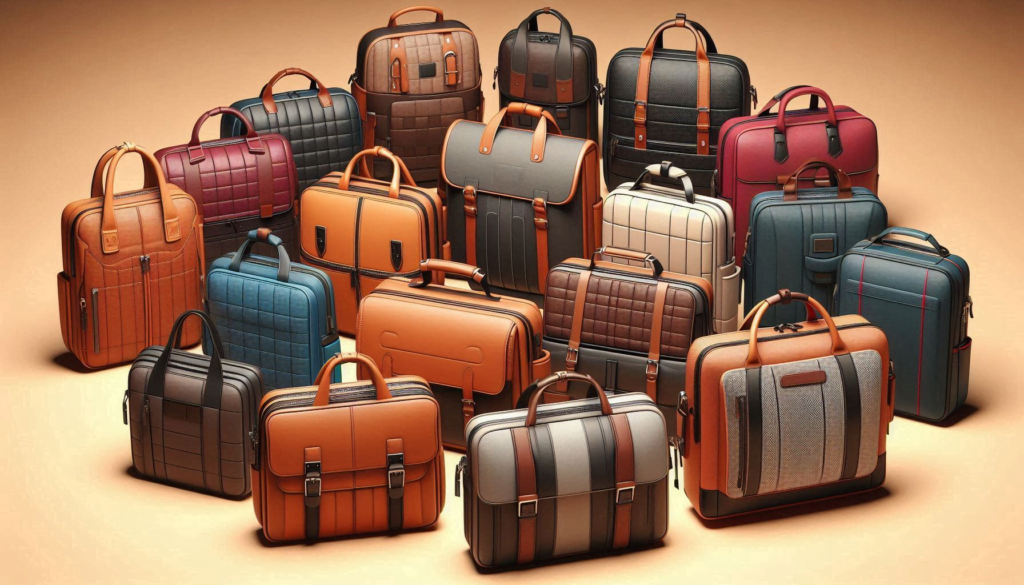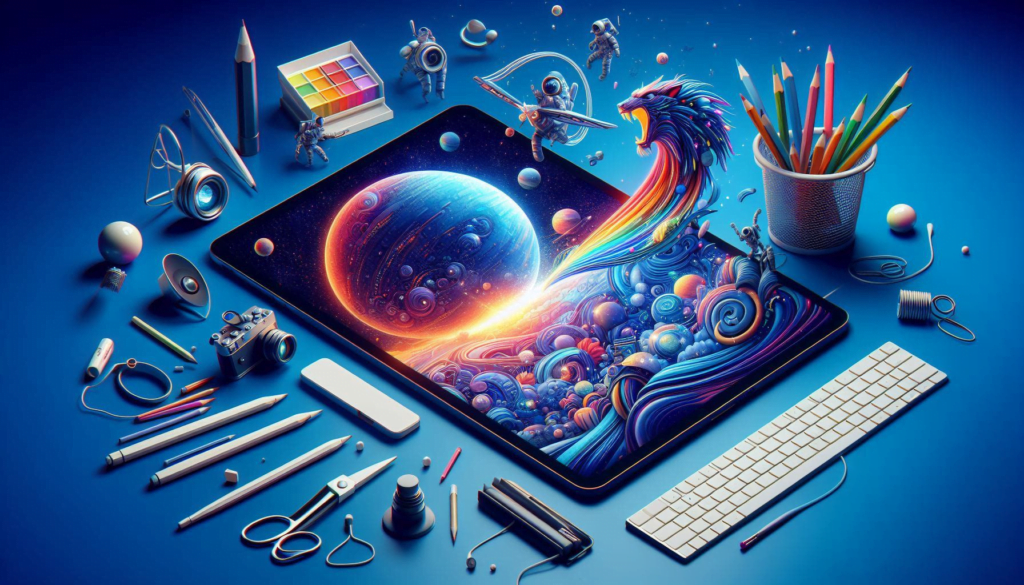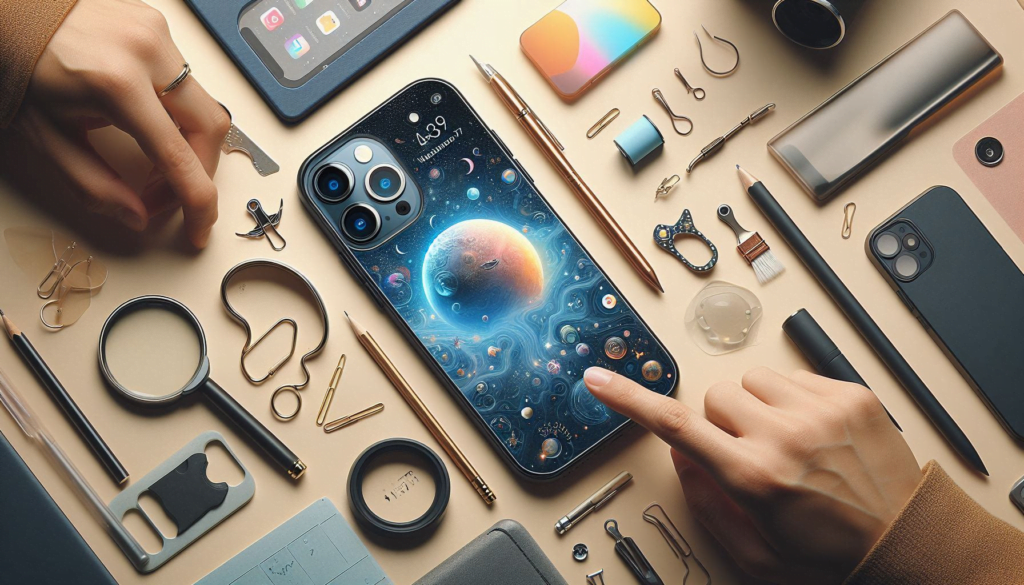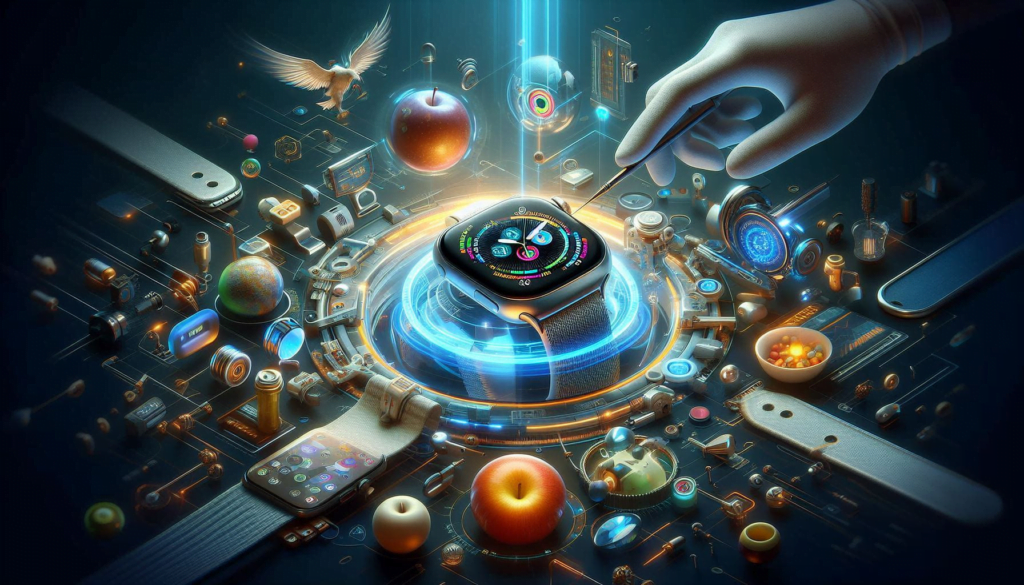In the realm of visual Technology Moment, the autostereoscopic 3D camera stands at the forefront, promising a leap beyond conventional imaging capabilities. Unlike traditional 3D cameras that require special glasses to perceive depth, autostereoscopic technology enables viewers to experience three-dimensional visuals without any additional aids.
At its core, autostereoscopy achieves this feat through sophisticated lenticular lenses or parallax barriers, strategically positioned over the camera’s imaging sensor. These optical elements create multiple viewpoints of the scene simultaneously, mimicking the way human eyes perceive depth. As a result, the camera captures not just flat images but multidimensional scenes that offer viewers a more immersive and realistic experience.
Imagine capturing a moment where the subject appears to leap out of the screen, or where the background seems to stretch into infinite depth—all rendered naturally through the autostereoscopic 3D camera. This technology holds promise across various domains, from enhancing visual storytelling in cinema to revolutionizing medical imaging and even transforming how we interact with augmented reality.
As we navigate the dynamic landscape of technological innovation, the autostereoscopic 3D camera represents a pivotal advancement—one that not only expands creative possibilities but also brings us closer to a future where immersive visual experiences are more accessible than ever before.
What is Autostereoscopic 3D Technology?
Autostereoscopic 3D technology refers to a method of displaying three-dimensional images that can be viewed without the need for special glasses. Unlike traditional 3D technologies, which require viewers to wear eyewear to experience the depth effects, autostereoscopic displays use advanced optical techniques to project different images to each eye, creating a sense of depth and dimensionality. This technology leverages various methods, such as lenticular lenses or parallax barriers, to achieve the 3D effect.
Why It’s Trending Now
The resurgence of interest in autostereoscopic 3D technology can be attributed to several factors. First, the demand for more immersive and engaging visual experiences is growing across various industries, from entertainment to education. People want to feel as if they are part of the action, and autostereoscopic 3D offers a way to achieve this without the inconvenience of additional accessories.
Secondly, advancements in display technology have made it more feasible to produce high-quality autostereoscopic displays. Improvements in resolution, brightness, and viewing angles mean that today’s autostereoscopic 3D cameras and screens can deliver more impressive and lifelike visuals than ever before.
Lastly, there is a push towards creating more accessible and user-friendly technology. By eliminating the need for glasses, autostereoscopic 3D makes the 3D experience more inclusive and convenient, encouraging broader adoption and opening up new possibilities for applications in various fields, including gaming, advertising, medical imaging, and education.
The combination of these factors has propelled autostereoscopic 3D technology into the spotlight, making it a hot topic among tech enthusiasts and industry professionals alike.
Table of Contents
History of 3D Technology
Early Beginnings
The journey of 3D technology began long before the digital era, tracing its roots back to the early 19th century. The first significant breakthrough came with the invention of the stereoscope by Sir Charles Wheatstone in 1838. Wheatstone’s stereoscope utilized a pair of mirrors at 45-degree angles to the user’s eyes, each reflecting a different image of the same object from slightly different angles. This created the illusion of depth and solidified the concept of three-dimensional viewing.
Evolution Over Time
Following Wheatstone’s invention, the next major leap occurred with the development of the anaglyph 3D technique in the late 19th century. This method involved overlaying two images, each tinted in different colors (typically red and blue), and viewing them through corresponding colored glasses. The different colors filtered the images to each eye, creating a 3D effect. Anaglyph 3D became popular in the early 20th century, particularly in print media and photography.
The mid-20th century saw the advent of polarized 3D technology, which improved upon the anaglyph method by reducing color distortion. This technique utilized polarized light to deliver separate images to each eye, enhancing the clarity and quality of the 3D effect. Polarized 3D was widely adopted in cinemas and theme parks, offering audiences an immersive experience.
Introduction of Autostereoscopic Technology
Autostereoscopic technology represents the latest evolution in 3D imaging, eliminating the need for special glasses altogether. The concept of autostereoscopy dates back to the early 20th century, with the development of lenticular lenses and parallax barrier techniques. However, it wasn’t until the late 20th and early 21st centuries that technological advancements made practical applications possible.
Lenticular lenses, first used in postcards and small displays, work by projecting different images to each eye through a series of tiny lenses on the surface of the display. This creates the illusion of depth and motion. The parallax barrier method, developed later, involves a layer with slits in front of the display, directing light from different pixels to each eye. Both methods laid the groundwork for modern autostereoscopic 3D displays and cameras.
The 21st century has seen rapid advancements in autostereoscopic technology, driven by the demand for more immersive and interactive experiences. With improvements in display resolution, processing power, and materials, autostereoscopic 3D cameras have become more sophisticated and accessible, paving the way for their use in various fields such as entertainment, medical imaging, education, and advertising.
Understanding Autostereoscopic 3D Cameras

Definition and Basic Concept
Autostereoscopic 3D cameras represent a cutting-edge technology in the world of three-dimensional imaging. Unlike traditional 3D cameras that require the use of special glasses to view the images in three dimensions, autostereoscopic 3D cameras allow viewers to experience depth and dimensionality without any additional eyewear. This is achieved by employing advanced optical systems that create the illusion of depth directly on the screen.
How It Differs from Traditional 3D Cameras
Traditional 3D cameras typically capture two slightly offset images corresponding to the left and right eyes, which are then viewed through glasses that filter each image to the respective eye, creating a stereoscopic effect. In contrast, autostereoscopic 3D cameras capture and display multiple images simultaneously, using sophisticated techniques to direct these images to the correct positions relative to the viewer’s eyes. This multi-view capture and display enable a natural and immersive 3D experience without the need for glasses.
Key Components of an Autostereoscopic 3D Camera
1. Multi-Lens Array: Autostereoscopic 3D cameras often use a multi-lens array system to capture different perspectives of the same scene. This array can consist of numerous lenses arranged in a specific pattern to ensure that multiple angles are captured simultaneously.
2. Lenticular Lenses: One of the primary technologies used in autostereoscopic displays is lenticular lenses. These lenses are responsible for directing the different images captured by the camera to specific viewing zones. When a viewer’s eyes are in the correct position, they receive different images, creating the perception of depth.
3. Parallax Barrier: Another technology employed in autostereoscopic 3D cameras is the parallax barrier method. This method uses a series of precisely aligned slits placed in front of the display. These slits allow each eye to see different sets of pixels, resulting in a 3D effect without glasses. The parallax barrier can be adjusted to enhance the 3D effect based on the viewer’s position.
4. High-Resolution Sensors: To capture the fine details necessary for an immersive 3D experience, autostereoscopic 3D cameras use high-resolution sensors. These sensors ensure that each captured perspective maintains clarity and detail, crucial for a convincing 3D effect.
5. Advanced Processing Algorithms: The data captured by the multiple lenses and sensors must be processed to create a coherent 3D image. Advanced algorithms process and combine these multiple images in real-time, optimizing them for display on an autostereoscopic screen.
How Autostereoscopic 3D Cameras Work
Autostereoscopic 3D cameras represent a fascinating leap in imaging technology, offering a way to capture and display three-dimensional images without the need for special glasses. This technology hinges on several innovative principles and components that work in tandem to create a seamless 3D viewing experience. Let’s dive into the mechanics behind autostereoscopic 3D cameras.
Mechanism Behind the Technology
At its core, autostereoscopic 3D technology aims to mimic the way our eyes perceive depth in the real world. Typically, our eyes see two slightly different images due to the distance between them. Our brain processes these differences to create a sense of depth. Autostereoscopic 3D cameras and displays replicate this process using sophisticated methods to direct different images to each eye.
Role of Lenticular Lenses
One of the primary methods used in autostereoscopic 3D cameras is lenticular lens technology. Lenticular lenses are a series of magnifying lenses, arranged in such a way that they can project different images at various angles. Here’s how they work:
- Image Capture: The camera captures multiple images from slightly different angles. This mimics the different perspectives that our two eyes would naturally see.
- Image Processing: These images are processed and aligned in a specific manner to correspond with the lenticular lenses’ arrangement.
- Display Mechanism: When these images are displayed through a lenticular lens sheet, each lens directs light to different parts of the viewing field. Consequently, each eye perceives a different image, creating a 3D effect without the need for glasses.
This method allows viewers to experience a 3D effect from various angles and distances, enhancing the overall viewing experience.
Parallax Barrier Method
Another technique used in autostereoscopic 3D displays is the parallax barrier method. A parallax barrier is a fine grating of material that is placed in front of the display screen, creating a barrier with slits positioned in a specific pattern. Here’s how it functions:
- Image Display: The display alternates between different images, meant for the left and right eyes.
- Barrier Function: The parallax barrier is strategically placed to ensure that each eye only sees the intended image. For instance, the left eye sees the images intended for it through the slits, while the right eye sees the corresponding right-eye images.
- Depth Perception: By directing different images to each eye, the barrier creates a sense of depth, making the image appear three-dimensional.
The parallax barrier method is particularly useful in devices like handheld consoles and monitors where the viewer’s position relative to the screen can be controlled or predicted.
Combining Methods for Enhanced Experience
In some advanced autostereoscopic 3D cameras and displays, a combination of lenticular lenses and parallax barriers might be used to optimize the viewing experience. This hybrid approach can address some limitations inherent in each method, providing a more flexible and immersive 3D viewing experience.
By leveraging these technologies, autostereoscopic 3D cameras can capture and render stunningly realistic three-dimensional images, making them a powerful tool in various applications from entertainment to medical imaging. The innovation lies in their ability to create depth without the need for additional eyewear, thus broadening their usability and appeal.
Advantages of Autostereoscopic 3D Cameras
Autostereoscopic 3D cameras bring a revolutionary shift in how we perceive and interact with visual content.
1. No Need for 3D Glasses
One of the most significant benefits of autostereoscopic 3D cameras is that they eliminate the need for 3D glasses. Traditional 3D viewing requires special glasses to create the depth effect, which can be cumbersome and uncomfortable for extended use. Autostereoscopic technology projects 3D images directly to the viewer’s eyes, creating a seamless and immersive experience without the hassle of wearing glasses. This makes it much more convenient for casual viewers and professionals alike, enhancing overall user satisfaction.
2. Enhanced Viewing Experience
Autostereoscopic 3D cameras provide a superior viewing experience by delivering high-quality, vivid 3D images. The technology creates a realistic sense of depth and dimension, making the content more engaging and lifelike. This enhanced visual experience is particularly beneficial in fields like gaming, where immersive environments are crucial, and in medical imaging, where detailed visuals can aid in diagnosis and treatment planning. The ability to view 3D content naturally and comfortably can significantly improve user engagement and retention.
3. Wider Audience Reach
Since autostereoscopic 3D technology does not require specialized glasses, it can reach a broader audience. This inclusivity is particularly advantageous for public displays, advertising, and educational purposes, where ease of access and viewer comfort are paramount. By removing the barrier of glasses, more people can enjoy and benefit from 3D content, whether in a museum exhibit, a digital billboard, or a classroom setting. This broader reach can lead to increased engagement and impact of the visual content.
4. Versatility in Application
Autostereoscopic 3D cameras can be used in a wide range of applications beyond traditional media and entertainment. For example, in the medical field, these cameras can provide detailed 3D visualizations for surgical planning and diagnostics, improving accuracy and outcomes. In education, they can create interactive learning experiences that help students understand complex concepts more easily. In advertising, the ability to display attention-grabbing 3D images can enhance marketing campaigns and attract more customers.
5. Real-Time 3D Capture and Display
Another advantage of autostereoscopic 3D cameras is their ability to capture and display 3D images in real-time. This feature is particularly useful in live events, video conferencing, and interactive installations, where instant 3D visualization can enhance the experience. For instance, in virtual meetings, participants can view each other in 3D, creating a more immersive and engaging interaction. In live events, real-time 3D displays can add a dynamic and visually stunning element to the performance.
6. Improved Content Creation
For content creators, autostereoscopic 3D cameras offer new possibilities in storytelling and visual effects. Filmmakers, game developers, and digital artists can leverage this technology to create more compelling and immersive content. The ability to capture 3D visuals without needing post-production conversion simplifies the workflow and allows for more creative experimentation. This can lead to innovative and captivating content that stands out in a crowded media landscape.
7. Cost-Effective Solutions
While autostereoscopic 3D technology may initially seem more expensive than traditional 3D setups, it can be more cost-effective in the long run. The elimination of 3D glasses reduces ongoing costs and logistical challenges associated with distributing and maintaining these accessories. Additionally, the improved user experience and broader audience reach can lead to higher returns on investment in various applications, from marketing campaigns to educational programs.
Applications of Autostereoscopic 3D Cameras

Entertainment Industry
The entertainment industry has always been a pioneer in adopting new technologies to enhance user experience, and autostereoscopic 3D cameras are no exception. These cameras allow filmmakers to create 3D content that can be viewed without the need for special glasses, making the viewing experience more natural and comfortable. This technology is particularly valuable in theme parks, where 3D rides and attractions can immerse visitors in a more engaging and realistic environment. Additionally, video game developers use autostereoscopic 3D cameras to provide gamers with a more immersive and visually stunning experience.
Medical Imaging
In the medical field, autostereoscopic 3D cameras offer significant benefits for imaging and diagnostics. They can capture detailed 3D images of anatomical structures, providing doctors with a more comprehensive view than traditional 2D imaging. This can be particularly useful in surgical planning, where understanding the spatial relationships between different structures is crucial. For instance, in minimally invasive surgery, having a clear 3D view can help surgeons navigate and operate with greater precision. Moreover, this technology can be used in medical training, allowing students to study complex anatomical details in 3D without the need for physical specimens.
Education and Training
Autostereoscopic 3D cameras have transformative potential in the education and training sectors. In classrooms, they can be used to create interactive learning materials that engage students and enhance their understanding of complex subjects. For example, in science classes, 3D models of molecules or biological organisms can provide a more tangible learning experience. In professional training, such as engineering or architecture, autostereoscopic 3D cameras can be used to create detailed 3D models and simulations, enabling trainees to explore and manipulate these models. This hands-on approach can lead to better retention of information and more effective skill development.
Advertising and Marketing
In advertising and marketing, the ability to capture and display 3D content without glasses opens up new possibilities for engaging and captivating audiences. Autostereoscopic 3D cameras can be used to create eye-catching displays and promotional materials that stand out in crowded marketplaces. For instance, in retail environments, 3D product displays can attract shoppers’ attention and provide a more interactive and memorable experience. Similarly, in digital advertising, 3D content can enhance online marketing campaigns by offering a more immersive and engaging way to showcase products and services. This technology can also be used in augmented reality (AR) and virtual reality (VR) applications, providing brands with innovative ways to connect with consumers.
Other Applications
Beyond the sectors mentioned above, autostereoscopic 3D cameras have potential applications in various other fields. In real estate, they can be used to create 3D tours of properties, allowing potential buyers to explore homes from the comfort of their own devices. In the automotive industry, they can enhance the design and testing processes by providing detailed 3D views of vehicle components and assemblies. In the field of cultural heritage and museum exhibits, autostereoscopic 3D cameras can help create digital representations of artifacts and historical sites, making them accessible to a wider audience and preserving them for future generations. The versatility and potential of this technology continue to expand as more industries recognize its benefits and find innovative ways to incorporate it into their practices.
Popular Autostereoscopic 3D Cameras in the Market
As the demand for autostereoscopic 3D technology grows, several companies have emerged as leaders in this innovative space. Below are some of the most popular autostereoscopic 3D cameras available in the market today:
1. Panasonic Lumix 3D1
The Panasonic Lumix 3D1 is a compact camera that features twin-lens technology to capture high-quality 3D images and videos. Key features include:
- Twin-Lens System: Allows for stereoscopic image capture, creating a 3D effect without the need for glasses.
- 12.1 Megapixel Sensors: Each lens has its own sensor, ensuring clear and detailed images.
- 3.5-inch LCD Touchscreen: Provides an easy interface for reviewing and editing images directly on the camera.
2. Sony Bloggie 3D Camera (MHS-FS3)
Sony’s Bloggie 3D Camera is designed for those who want to capture and share 3D content easily. Its main features are:
- Dual Lens and Sensor: Captures 3D videos and stills in 1080p resolution.
- Autostereoscopic Display: The built-in screen allows users to view 3D content without glasses.
- Compact and Portable: Ideal for vlogging and on-the-go photography.
3. Fujifilm FinePix Real 3D W3
Fujifilm has been a pioneer in 3D imaging, and the FinePix Real 3D W3 is a testament to their expertise. Highlights include:
- Dual 10 Megapixel Sensors: Each lens captures high-resolution images, which are then combined to create a 3D effect.
- 3D/2D Hybrid Shooting: Users can switch between 3D and 2D modes, offering versatility in capturing different types of content.
- 3.5-inch Autostereoscopic LCD: Allows for immediate 3D playback without glasses.
4. Lytro Illum
Although primarily known for its light field capabilities, the Lytro Illum offers unique 3D image capturing features:
- Light Field Technology: Captures the direction of light rays, enabling users to refocus images after taking them.
- 3D Image Creation: The camera’s software can render images in 3D, providing a different perspective on photography.
- High-Resolution Sensor: Ensures that images are sharp and detailed, enhancing the 3D effect.
5. Canon Mixed Reality (MR) System
Canon’s Mixed Reality System combines 3D camera technology with augmented reality, making it ideal for professional and industrial applications:
- High-Precision 3D Capture: Utilizes multiple cameras and sensors to create accurate 3D models of real-world objects.
- Integration with AR: Can overlay digital information onto real-world views, useful for training, design, and simulation.
- Professional-Grade Equipment: Designed for industrial use, offering robust performance and reliability.
6. HoloLens by Microsoft
While not a traditional 3D camera, the HoloLens integrates advanced 3D capturing capabilities within its AR headset:
- Spatial Mapping: Uses multiple sensors to create 3D maps of the environment.
- Mixed Reality Experience: Combines 3D capture with AR, allowing users to interact with both real and virtual objects.
- Wide Range of Applications: From gaming and entertainment to professional and industrial uses.
Features to Look For
When choosing an autostereoscopic 3D camera, consider the following features to ensure you get the best device for your needs:
- Image Quality: High-resolution sensors and advanced image processing capabilities are essential for capturing detailed 3D images.
- Ease of Use: Look for cameras with intuitive interfaces and autostereoscopic displays for easy review and editing of 3D content.
- Portability: Depending on your use case, you may want a compact and lightweight camera for on-the-go shooting.
- Versatility: Cameras that offer both 3D and 2D shooting modes provide more flexibility for different types of projects.
- Connectivity: Built-in Wi-Fi, Bluetooth, and other connectivity options can make it easier to share and transfer 3D content.
Challenges and Limitations of Autostereoscopic 3D Cameras
Despite the excitement and innovation surrounding autostereoscopic 3D cameras, several challenges and limitations need to be considered:
Technical Complexity
Autostereoscopic 3D technology involves complex engineering. The precise alignment of lenticular lenses or the parallax barrier is crucial for creating the 3D effect without glasses. Any misalignment can result in a poor quality image or a less effective 3D experience. This complexity often leads to higher manufacturing costs and longer development times.
Viewing Angles
One of the significant limitations of autostereoscopic 3D cameras is the restricted viewing angles. Unlike traditional 3D systems where viewers can wear glasses and move freely, autostereoscopic displays require the viewer to be positioned at specific angles. If viewers move outside these angles, the 3D effect can diminish or distort, limiting the usability in dynamic environments or for multiple viewers.
Resolution and Image Quality
Creating a glasses-free 3D experience can sometimes compromise the overall resolution and image quality. The process of dividing the image into multiple views to create the 3D effect can reduce the sharpness and clarity of the display. This trade-off can be particularly noticeable in high-definition applications where image quality is paramount.
Content Creation
Producing content for autostereoscopic 3D cameras requires specialized equipment and skills. Filmmakers, game developers, and other content creators need to adapt their processes to accommodate the unique requirements of 3D content. This often involves additional time, effort, and costs, which can be a barrier for widespread adoption.
Cost
The advanced technology and materials used in autostereoscopic 3D cameras make them more expensive than traditional 2D or 3D cameras. This higher cost can be a significant deterrent for consumers and businesses, particularly in markets where budget constraints are a major concern.
Market Acceptance
While the concept of glasses-free 3D is appealing, market acceptance has been slower than expected. Consumers may be hesitant to invest in new technology that requires a learning curve or does not yet have a wide range of content available. Additionally, the initial excitement can be tempered by the practical limitations experienced by early adopters.
Health Concerns
Prolonged exposure to 3D images, especially without glasses, can cause eye strain, headaches, and discomfort for some users. These health concerns can limit the amount of time viewers can comfortably engage with autostereoscopic 3D content and may affect the overall user experience.
Compatibility and Integration
Integrating autostereoscopic 3D cameras with existing systems and workflows can be challenging. Compatibility issues with other hardware and software, as well as the need for new standards and protocols, can complicate the adoption process for businesses and content creators.
Maintenance and Durability
The intricate design of autostereoscopic 3D cameras can make them more susceptible to wear and tear. Ensuring long-term durability and reliability requires ongoing maintenance, which can be both costly and time-consuming.
Future of Autostereoscopic 3D Cameras
As technology continues to evolve at a breakneck pace, the future of autostereoscopic 3D cameras holds exciting possibilities that could transform the way we interact with visual content. Here’s a detailed look at where this technology might be headed:
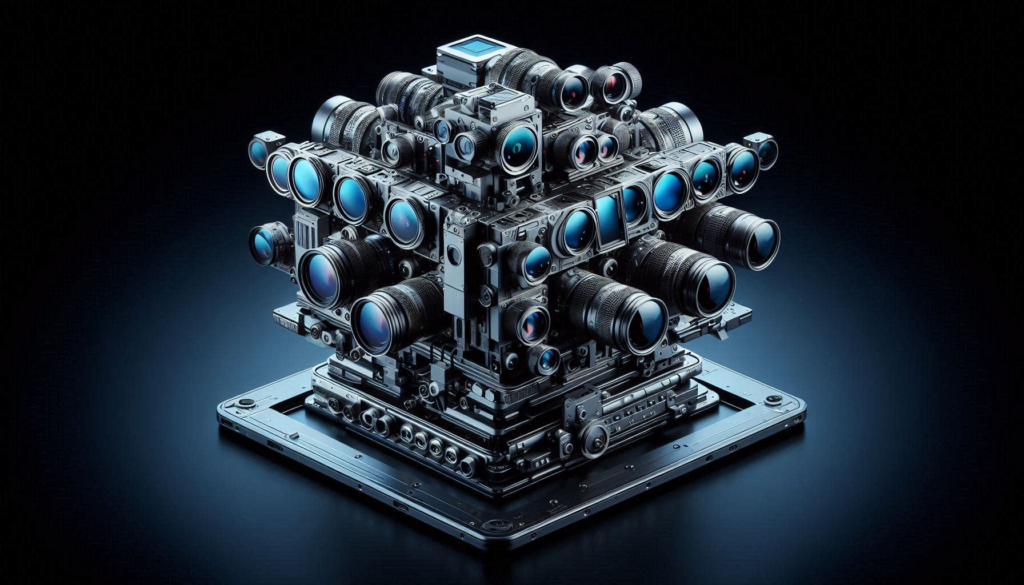
Advancements in Technology
Autostereoscopic 3D cameras are set to benefit from several technological advancements:
- Improved Image Quality: With ongoing research and development, future autostereoscopic 3D cameras will offer higher resolution and better depth perception. Enhanced image sensors and processing algorithms will reduce artifacts and improve the clarity of 3D images.
- Enhanced Display Technologies: The integration of advanced display technologies, such as OLED and microLED, will make 3D visuals more vibrant and immersive. These displays will also be more energy-efficient and offer better color accuracy.
- Miniaturization and Portability: As components become smaller and more efficient, we can expect more compact and portable autostereoscopic 3D cameras. This will make the technology more accessible for both professional and consumer use.
- Integration with Augmented Reality (AR) and Virtual Reality (VR): Future 3D cameras will likely integrate seamlessly with AR and VR systems, providing a more cohesive and immersive experience. This could lead to new applications in gaming, simulations, and virtual environments.
Broader Applications
The potential applications of autostereoscopic 3D cameras are expanding:
- Medical Field: Advanced 3D imaging can improve diagnostic accuracy and surgical planning. For instance, detailed 3D scans could help in creating better pre-surgical models and simulations, enhancing precision in procedures.
- Consumer Electronics: As 3D technology becomes more affordable, we might see autostereoscopic 3D cameras being integrated into everyday consumer devices like smartphones, tablets, and even home entertainment systems.
- Education and Training: In educational settings, 3D cameras could provide more interactive and engaging learning experiences. For example, 3D models and simulations can help students better understand complex subjects in subjects like biology, engineering, and architecture.
- Advertising and Marketing: Businesses will leverage 3D cameras to create more compelling and interactive advertisements. Immersive 3D content can capture consumer attention more effectively and offer novel ways to experience products.
Challenges and Considerations
Despite the exciting prospects, there are several challenges to address:
- Cost: High-quality autostereoscopic 3D cameras are still relatively expensive, which may limit their widespread adoption. As technology advances and production costs decrease, this barrier is likely to reduce.
- Content Creation: The creation of 3D content requires specialized skills and software. Ensuring that there is an adequate ecosystem of tools and expertise will be crucial for the technology’s growth.
- Consumer Acceptance: The success of autostereoscopic 3D cameras will depend on consumer acceptance and demand. Effective marketing and demonstration of the technology’s benefits will be key in driving adoption.
Buying Guide for Autostereoscopic 3D Cameras
When considering the purchase of an autostereoscopic 3D camera, it’s important to understand the factors that can significantly impact your experience and satisfaction with the device.
1. Purpose and Use Case: Before diving into technical specifications, identify your primary use for the autostereoscopic 3D camera. Are you using it for professional applications like medical imaging or scientific research? Or is it intended for personal use, such as capturing memorable moments or enhancing entertainment experiences? Understanding your needs will guide you in selecting the most suitable camera.
2. Image Quality and Resolution: The core function of any camera is to produce high-quality images, and this is even more critical for autostereoscopic 3D cameras. Look for a camera with high resolution to ensure that your 3D images are clear and detailed. The resolution affects the depth and accuracy of the 3D effect. Cameras with higher resolutions typically provide a more immersive and realistic 3D experience.
3. Viewing Angle and Depth Perception: Autostereoscopic 3D cameras use different technologies to create a 3D effect. Some rely on lenticular lenses, while others use parallax barriers. The effectiveness of these technologies depends on the camera’s ability to handle viewing angles and depth perception. Make sure the camera offers a wide viewing angle and can maintain a consistent depth effect without significant distortion.
4. Ease of Use: User-friendliness is another crucial factor. Check if the camera has an intuitive interface and straightforward controls. Cameras with complex settings might require additional time to learn and use effectively. Look for features like automatic 3D image adjustments and user-friendly software that can enhance the ease of operation.
5. Compatibility and Connectivity: Ensure that the autostereoscopic 3D camera is compatible with your existing devices and systems. Check for connectivity options such as USB, HDMI, or Wi-Fi, which are essential for transferring and sharing 3D images. Compatibility with various software and platforms can also be important, depending on your intended use.
6. Build Quality and Durability: The build quality of the camera affects its longevity and performance. Look for a camera made from durable materials that can withstand regular use. If you plan to use the camera in different environments, consider its resistance to dust, moisture, and other potential hazards.
7. Battery Life and Power Options: Battery life is a significant consideration, especially if you plan to use the camera for extended periods. Check the battery specifications and consider whether the camera supports interchangeable batteries or has convenient charging options. Long battery life can be crucial for uninterrupted use in professional settings.
8. Price and Budget: Autostereoscopic 3D cameras can vary widely in price. Set a budget based on your requirements and compare different models within that range. While higher-priced cameras may offer advanced features, it’s essential to balance cost with the functionality that meets your needs.
9. Brand Reputation and Reviews: Research the brands and read user reviews to gauge the performance and reliability of the camera. Brands with a strong reputation in the 3D camera industry are likely to provide better support and quality. Reviews from other users can give insights into the camera’s real-world performance and any potential issues.
10. Warranty and Support: A good warranty can protect your investment in case of defects or malfunctions. Reliable customer support can also be valuable for troubleshooting and getting assistance if needed.
Tips for Maximizing Your 3D Camera Experience
Autostereoscopic 3D cameras are an exciting technology that can revolutionize the way you capture and view images. To fully leverage the capabilities of your 3D camera, consider these tips:
1. Understand Your Camera’s Capabilities: Each 3D camera has its unique set of features and specifications. Before diving into usage, take some time to familiarize yourself with your camera’s manual. Understanding the camera’s different modes, settings, and capabilities will help you make the most of its features. For example, some cameras offer different depth modes that can be useful depending on what you’re trying to capture.
2. Positioning and Angling: The way you position and angle your 3D camera significantly affects the quality of the 3D effect. Make sure to align your camera properly to ensure that the stereoscopic effect is maximized. For instance, when capturing a scene with multiple layers of depth, positioning your camera at a slight angle to the subject can help enhance the perception of depth.
3. Lighting Conditions: Good lighting is crucial for capturing high-quality 3D images. Ensure that the scene you are photographing is well-lit. Poor lighting can lead to a loss of detail and diminish the effectiveness of the 3D effect. Natural light often works best, but if you’re indoors, using diffused lighting can help achieve a balanced and clear image.
4. Use High-Resolution Settings: For the best results, always use the highest resolution settings available on your 3D camera. High-resolution images ensure that the depth information is captured more accurately, leading to a more impressive and detailed 3D effect. This is particularly important if you plan to print or display your 3D images on large screens.
5. Experiment with Depth: One of the unique features of autostereoscopic 3D cameras is their ability to capture different levels of depth. Experiment with various depths and distances to find the most striking effects. For example, capturing objects at varying distances from the camera can create a more dynamic and engaging 3D image.
6. Take Multiple Shots: To increase the chances of getting the perfect 3D shot, don’t hesitate to take multiple images of the same scene from slightly different angles or positions. This approach allows you to choose the best shot and ensures that you capture the full depth and detail of the scene.
7. Edit with Care: Post-processing can enhance the quality of your 3D images, but it should be done carefully. Use editing software that supports 3D image formats and tools to adjust brightness, contrast, and color balance. Be mindful not to over-edit, as this can distort the 3D effect and reduce the overall quality of your image.
8. Test Different Viewing Angles: Different people might experience the 3D effect differently based on their viewing angle. Test how your images look from various angles and distances to ensure that they provide a consistent and immersive experience for viewers.
9. Keep Your Lens Clean: A clean lens is essential for sharp, clear images. Regularly check and clean your camera’s lens to prevent smudges or dirt from affecting the quality of your 3D shots. Use a soft, lint-free cloth and proper lens cleaning solutions to avoid damaging the lens.
10. Share and Get Feedback: Once you’ve taken some great 3D images, share them with friends, family, or online communities to get feedback. Other people’s perspectives can offer valuable insights into how to improve your technique and make the most of your 3D camera.
Comparing Autostereoscopic 3D Cameras with Other 3D Technologies
When it comes to 3D technology, there are several different approaches, each with its own set of advantages and limitations. Autostereoscopic 3D cameras are just one of these technologies, and understanding how they compare to other 3D systems can help you choose the best solution for your needs. Here’s a detailed comparison:
1. Traditional Stereoscopic 3D Cameras
Definition and Method: Traditional stereoscopic 3D cameras use two lenses to capture images from slightly different angles, mimicking the way human eyes perceive depth. The resulting images are combined to create the illusion of 3D when viewed through special 3D glasses.
Comparison Points:
- Viewing Experience:
- Autostereoscopic: Offers a glasses-free 3D experience. Viewers can see depth and dimension without the need for additional equipment.
- Stereoscopic: Requires 3D glasses for viewing. This can be inconvenient and sometimes uncomfortable for extended periods.
- Flexibility:
- Autostereoscopic: Limited to specific viewing angles and distances, as the 3D effect is optimized for a particular position or range.
- Stereoscopic: Generally offers a wider range of viewing angles, though the experience is dependent on the glasses.
- Applications:
- Autostereoscopic: Often used in displays like 3D monitors and some advanced imaging systems.
- Stereoscopic: Commonly used in film and television production, virtual reality (VR), and other immersive environments.
2. Virtual Reality (VR) Systems
Definition and Method: VR systems create a fully immersive 3D environment using headsets equipped with sensors and display screens. These systems track the user’s head movements to provide a dynamic and interactive 3D experience.
Comparison Points:
- Immersion:
- Autostereoscopic: Provides a 3D view without full immersion. The experience is more akin to looking at a 3D picture or display.
- VR: Offers complete immersion in a virtual environment, allowing for interactive and engaging experiences.
- Use Case:
- Autostereoscopic: Best suited for displays, presentations, and applications where glasses-free 3D is desirable.
- VR: Ideal for gaming, simulation, training, and applications requiring full immersion and interaction.
- Equipment:
- Autostereoscopic: Requires a specific type of display or camera. No additional equipment is needed for the viewer.
- VR: Requires a headset, and sometimes additional controllers or sensors, which can be costly and cumbersome.
3. Holographic Displays
Definition and Method: Holographic displays use interference patterns of light to create a 3D image that appears to float in space. Unlike autostereoscopic systems, which rely on viewing angles, holography creates a true three-dimensional image.
Comparison Points:
- Image Quality:
- Autostereoscopic: Provides a 3D effect but the depth and clarity can be limited compared to holography.
- Holographic: Offers a more lifelike and detailed 3D image that can be viewed from various angles.
- Technology:
- Autostereoscopic: Uses lenticular lenses or parallax barriers to achieve 3D effects.
- Holographic: Involves complex light manipulation and recording techniques to produce the 3D image.
- Practicality:
- Autostereoscopic: More accessible and cost-effective for consumer electronics and displays.
- Holographic: Currently more advanced and expensive, often used in specialized applications like high-end displays and research.
4. 3D Projection Systems
Definition and Method: 3D projection systems use dual projectors to display images on a screen, which are then viewed through 3D glasses to create a 3D effect. This is commonly seen in movie theaters.
Comparison Points:
- Viewing Setup:
- Autostereoscopic: Suitable for personal or small group viewing without special glasses.
- 3D Projection: Requires 3D glasses and is typically used for larger audiences in theaters.
- Image Size and Scale:
- Autostereoscopic: Generally used for individual screens or displays, with limited size.
- 3D Projection: Can accommodate large screens and is ideal for cinematic experiences.
- Flexibility:
- Autostereoscopic: Offers a more versatile viewing experience but may be limited in terms of screen size and scalability.
- 3D Projection: Provides a grander scale for public viewings but relies on glasses for the 3D effect.
Conclusion
In the conclusion of your blog post, you want to wrap up the key points discussed in a compelling and clear manner. Here’s how you can approach it:
Recap the main points you covered about autostereoscopic 3D cameras, including their technology, advantages, applications, and current market offerings. This helps reinforce the information for your readers and ensures they leave with a solid understanding of the topic.
Highlight the significance of autostereoscopic 3D technology in today’s world. Discuss how it enhances the visual experience without the need for glasses, making it a noteworthy advancement in 3D imaging.
Briefly touch on the potential future developments in autostereoscopic 3D technology. This could include emerging trends, ongoing research, or potential applications that might become more prevalent.
FAQs – Frequently Asked Questions
What is the main advantage of autostereoscopic 3D cameras over traditional 3D cameras?
Autostereoscopic 3D cameras provide a 3D viewing experience without the need for specialized glasses. This allows for a more natural and immersive experience, making the technology more accessible and user-friendly.
How does autostereoscopic 3D technology work without glasses?
Autostereoscopic 3D technology uses methods like lenticular lenses or parallax barriers to project different images to each eye, creating a 3D effect. This allows viewers to see depth and dimension without wearing additional equipment.
Are autostereoscopic 3D cameras suitable for professional use?
Yes, autostereoscopic 3D cameras are used in various professional fields such as medical imaging, entertainment, and education. They offer high-quality 3D imaging that can be beneficial for detailed analysis and presentations.
What are some popular brands or models of autostereoscopic 3D cameras?
Some well-known brands and models include the [insert example brands/models here]. These cameras vary in features and specifications, so it’s important to choose one that fits your specific needs.
Will autostereoscopic 3D technology become more mainstream in the future?
As technology continues to advance and the demand for immersive experiences grows, autostereoscopic 3D technology is likely to become more mainstream. Ongoing improvements and broader adoption in various industries could drive its widespread use.


